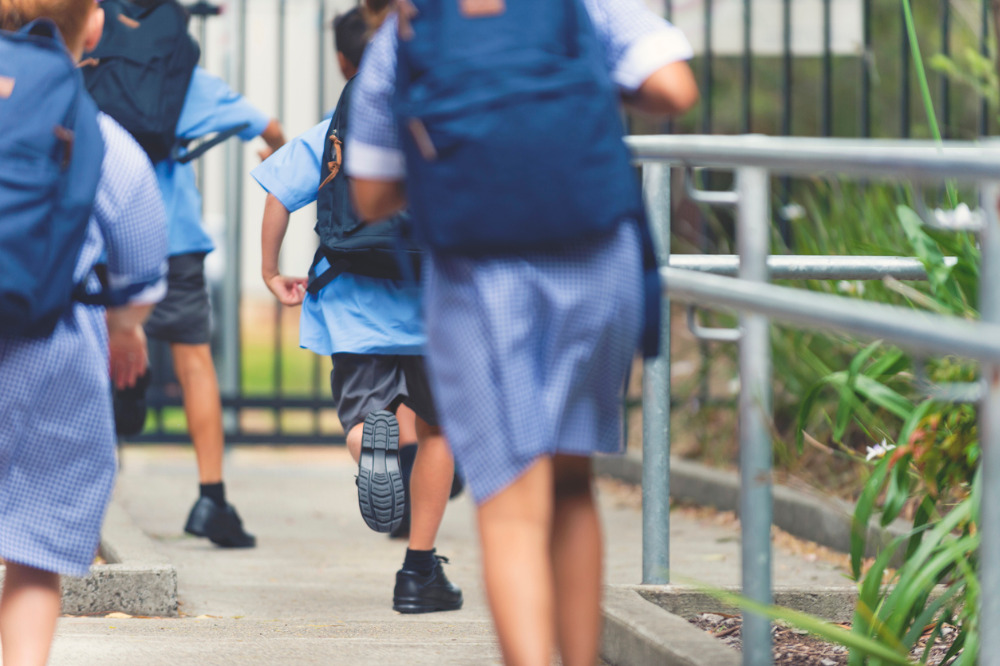
As students and staff ease into Term 1, fostering a safe school environment is top of mind for principals who are mindful of reports showing a sharp rise in the number of assaults taking place on campus.
In NSW schools alone, assaults across have risen a staggering 50% over the past decade, with an average of 10 incidents of violence being reported to the police each school day.
To former educator, Smeeta Singh, who is currently National Program Director of Power to Kids at The MacKillop Institute, statistics like this are worrying and highlight the need for evidence-based strategies and target professional support.
With more than 20 years in the education sector, Singh has worked across a variety of roles that focus on empowering young people through education, including school improvement, teacher training and child wellbeing.
Through senior leadership roles at AVID Australia, The Smith Family and The Orange Door, she has led the rollout of trauma-informed practice and systems-based change across school, family violence and community services sectors.
A multifaceted challenge
When asked what she sees as the greatest challenges for Australian schools in 2024 when it comes to student safety and wellbeing, Singh pointed to disruptive school climates, which can significantly impact educational continuity, teacher-student relationships, and wellbeing.
“Schools are reporting high teacher attrition, escalating mental health and student behaviour concerns, and increasing absenteeism,” Singh told The Educator.
“We know that building trusted, safe and positive relationships at school is a foundation for wellbeing. A whole-of-school approach that embeds trauma-informed teaching practice is imperative to increasing safety for students and teachers alike.”
Singh said discourse on respectful relationships education, safe schools and sexual health can vastly vary, impacting educator confidence to take proactive preventative measures, particularly around sexual safety.
“Authorisation and increased support from their school community and leadership is required; ensuring a shared vision, building a common language, and ongoing communication with the whole school community,” she said.
“Lastly, the use of online platforms for grooming, child exploitation and abuse is rapidly increasing. I often hear from leaders and teachers about the challenges of navigating safety in ever-changing online spaces.”
Singh highlighted the need for ongoing professional development to ensure educators are informed and have the digital literacy skills to understand the platforms students are engaging with that may be presenting risks to safety.
Strengthening prevention
To help schools improve student safety and wellbeing, The MacKillop Institute designed and implemented the ‘Power to Kids in Schools’ program with the University of Melbourne. The program features three evidence-based strategies – a school-wide education approach, early identification and intervention, and connecting with appropriate support services.
“Brave conversations are one of many strategies to connect and engage meaningfully with a young person, both acknowledging positive age-appropriate behaviours and raising concerns,” Singh said, adding these conversations are most effective when the educator is informed on key sexual safety topics and has a safe and trusted relationship with the young person.
“It's important to remember that no one conversation is perfect. We utilise conversation models like TALK, CARE and YARN to provide structure, including strategies on how to respond when educators don’t know the answer or aren’t sure of what to do next.”
- The TALK model: Take Initiative, Ask them what they think/feel, Let them know the facts, Keep the conversation going
- CARE model: Consent, Age, Respect, Equality
- YARN model: Yarn up about culture, Action, Respectful relationships, Nurture
Singh said the Power to Kids in Schools program emphasises acting within the scope of your role and responsibilities and working closely with statutory services and local support services.
“Child safety is a shared responsibility, an important strategy is knowing when to escalate, or reach out to others for support.”
The darker side of digital accessibility
Singh noted that while advances in technology can enhance student safety and wellbeing initiatives, they can also create further risks.
“An immediate benefit of technology is the significant impact to accessibility and reach. Schools can quickly access information, services and support and can access online appointments and live chat options,” she said.
“Mental health apps are now commonplace. Schools can connect in real time across multiple stakeholders, improving communication, coordination, and responses.”
Singh said the darker side of accessibility and reach is that online perpetrators are now local, national, and international.
“In the 2022-23 financial year, the ACCCE Child Protection Triage Unit received 40, 232 reports of online child sexual exploitation,” she said.
“Schools, families and students need to be vigilant in taking safety precautions and continue to assess whether the tool itself and their use of online tools is safe and secure.”
Singh pointed to a 2022 report by Thorn, which found while young people are highly attuned to inappropriate contact online, nearly 23% reported they had remained in contact after an online contact had made them feel uncomfortable.
“Power to Kids explicitly covers online safety as part of whole-of-staff training, so educators can confidently ask pertinent questions, support young people with setting up safe accounts, empower safer online behaviours, and have confidence on where and when to report.”


